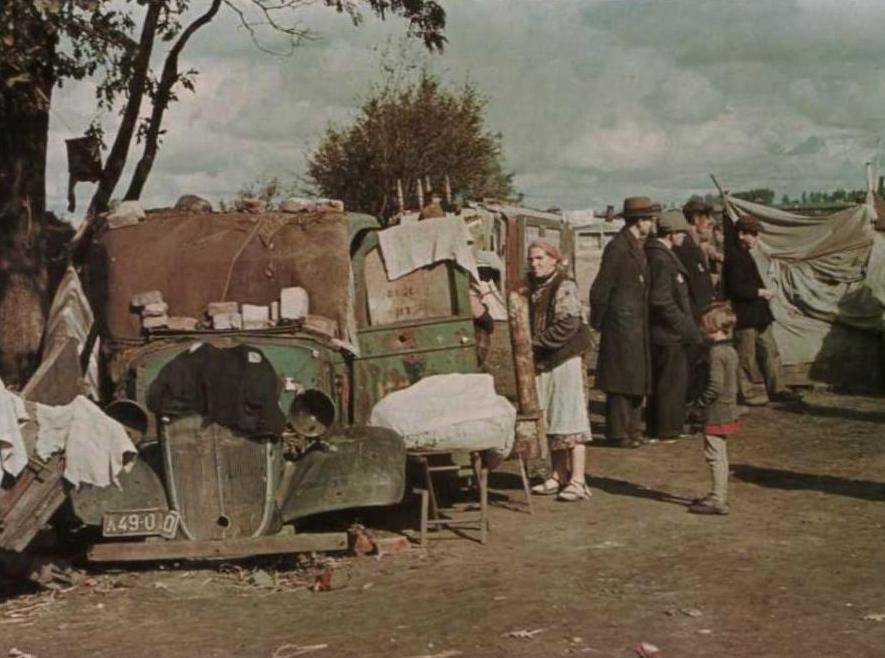
The Holocaust in Poland: Kutno Ghetto

Figure 1.--After the initiall SS killing action, the Germans forced the surviving Jews of Kutno onto essentially a junk yard on the outskirts of the town. One family converted a junk car into their home. Photographer: Hugo Jaeger. Jaeger was one of Hitler's personal photographers. He had unprecedented access to Hitler, including private gaterings. This is why he was able to obtain hard to get color film. It was taken just after the invasion while the Wehrmacht and not the SS was in charge (October 1939). Jaeger sold his archice to 'Life Magazine' years after the War.
|
|
Kutno is a town in central Poland near Lodz and an important railroad junction. The importance of the Warsaw Ghetto leads people to assume that all the NAZI ghettos were walled in formal entities. Because of NAZI actions against the Jews as well as that of NAZI allies (Croatia, Hungary, Romamia, and Slovakia), temporary camps were set up all over Eastern Europe where Jews were confined before killing actions were organized or they were deported to the death camps. One of the camps was at the Polish town of Kutno. The ordeal of Kutno's 7,200 Jews began during the German invasion (September 1939). The Polish Army attempted a counter offensive in the Kutno area before being ovewealmed by the Germans. SS units murdered many of the town's Jews. Later the survivors were confined to a debris scattered lot on the outskirts of town (early 1940). It has been called the worse ghetto in Poland. The conditions were primitive. There were few houses there, the internees had to assemble shacks as best they could from the debris they found there. The phot here was taken before the ghetto was formally established and closed in. The Kutno Jews and others from the surrounding area were noved to the grounds of the “Konstancja” sugar factory. Eventually more than 7,000 Jews were confined there. Some of the buildings has been bombed. Many had to piece together outdoor living arrangements as best they could. The SS set up barbed wire and a brick wall to fence them in. Abram Korn recalls Kutno as a 16-year old youth. His family was soon deported to the Kutno Ghetto which was essentially a walled-in prison. The camp was primitive. Living conditions were terrible. There was no running water anf only one open pit toilet. A hand pump provided water for the 2,000 Jews imprisoned there. Daily life involved waiting in lines. There were lines for for food, water, and use of the pit toilet. The NAZIs refused to allow the Jews to remove the wasre and sewage. A typhus epidemic spread by lice. killed many. Others died as a result of malnutrition and lack of shelter during the winters of 1940 and 41. Finally the Jews still alive were transported to the nearby Chelmo death camp wehere they were murdered (March 1942).
Sources
Korn, Abe. Abe's Story: A Holocaust Memoir.
HBC

Navigate the Boys' Historical Clothing Web Site:
[Return to Main Polish ghetto page]
[Return to Main German Blitzkrieg on Poland page]
[Introduction]
[Activities]
[Biographies]
[Chronology]
[Clothing styles]
[Countries]
[Bibliographies]
[Contributions]
[FAQs]
[Glossaries]
[Images]
[Links]
[Registration]
[Tools]
[Boys' Clothing Home]
Created: 5:41 AM 6/8/2010
Last updated: 5:41 AM 6/8/2010



